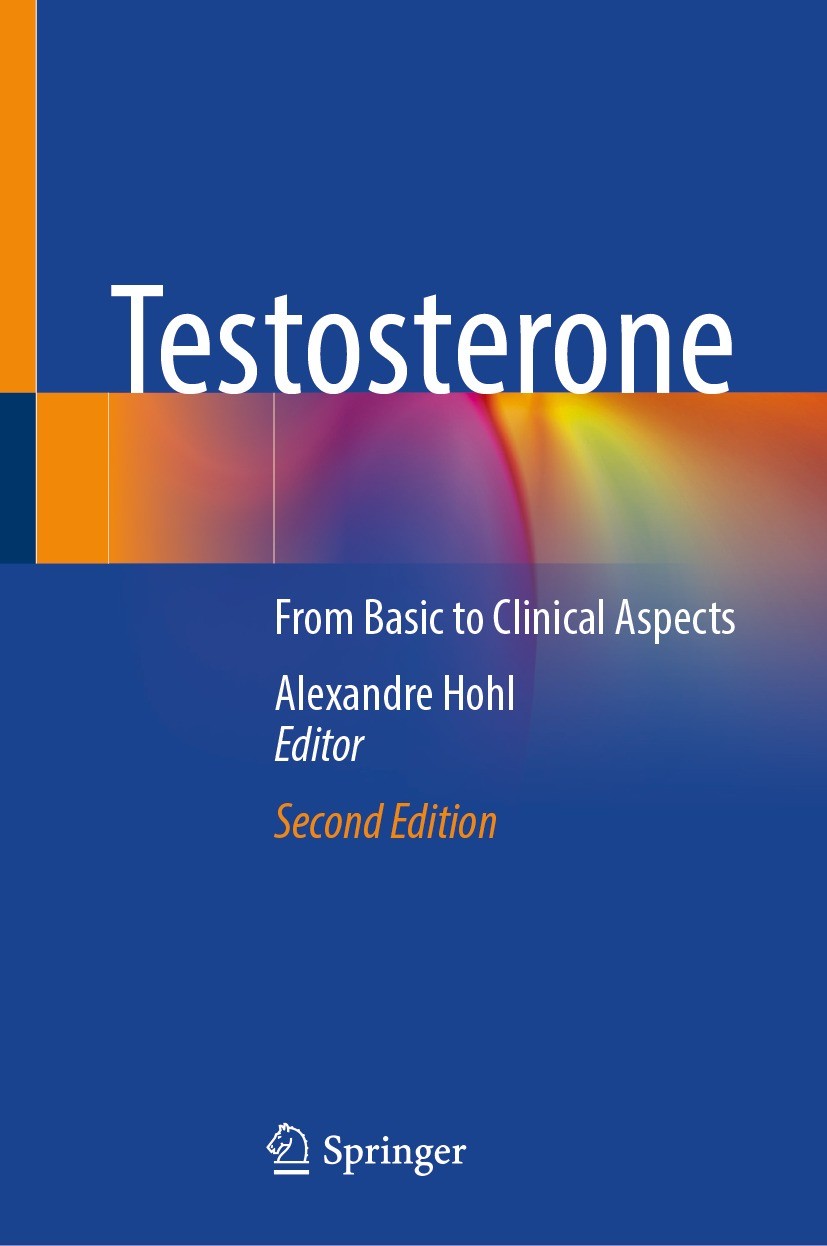| 书目名称 | Testosterone | | 副标题 | From Basic to Clinic | | 编辑 | Alexandre Hohl | | 视频video | http://file.papertrans.cn/904/903449/903449.mp4 | | 概述 | Ethical focus on testosterone: discusses the public health issue of excessive testosterone use.Transgender: gives detailed information on trans men and testosterone use in this population.Multidiscipl | | 图书封面 |  | | 描述 | .Even though research on testosterone is increasing, there is still much controversy regarding its physiology and clinical use. This book provides a broad overview on testosterone, from its basic features to the most recent evidence of clinical applicability. In addition, specific conditions in which testosterone play a pivotal role are discussed in detail, such as hypogonadism, misuse and abuse, puberty, cardiovascular effects and testosterone therapy...The testes are vital organs for reproduction of the human species, besides being the main source of testosterone production in men. Although not essential for survival, these singular structures represent the essence of male biological function...Testosterone is the most important testicular androgen in men. Low serum testosterone levels are associated with cardiovascular morbidity, metabolic syndrome, type 2 diabetes mellitus, atherosclerosis, osteoporosis, sarcopenia, and mortality. Also, there is increasing evidencethat serum testosterone is a major biomarker status of men‘s health in general...Hypogonadism in a male refers to a decrease in one or both of the two major functions of the testes: sperm production or testosterone pr | | 出版日期 | Book 2023Latest edition | | 关键词 | Testosterone; Hypogonadism; Androgens; Anabolism; Hormones | | 版次 | 2 | | doi | https://doi.org/10.1007/978-3-031-31501-5 | | isbn_softcover | 978-3-031-31503-9 | | isbn_ebook | 978-3-031-31501-5 | | copyright | The Editor(s) (if applicable) and The Author(s), under exclusive license to Springer Nature Switzerl |
The information of publication is updating

|
|
 |Archiver|手机版|小黑屋|
派博传思国际
( 京公网安备110108008328)
GMT+8, 2025-11-18 23:48
|Archiver|手机版|小黑屋|
派博传思国际
( 京公网安备110108008328)
GMT+8, 2025-11-18 23:48


